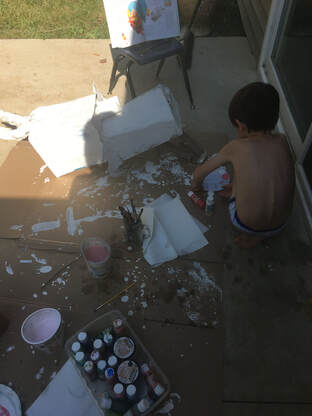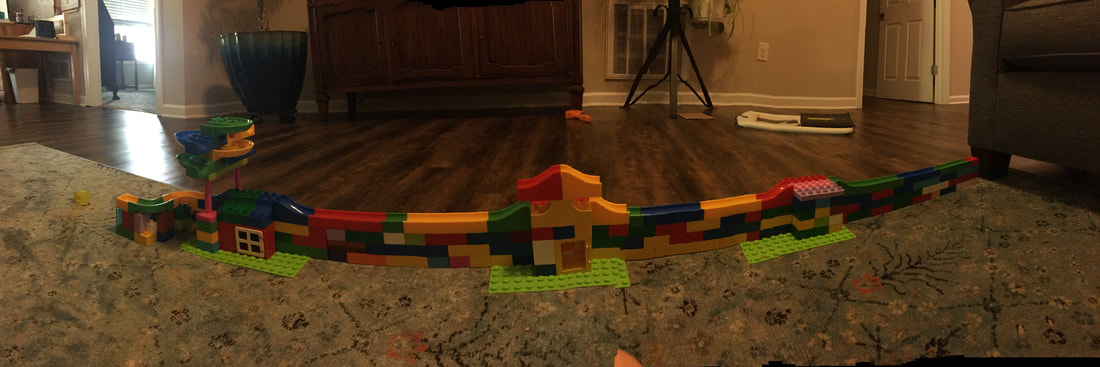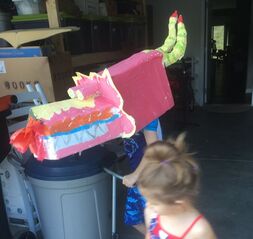|
My annotated bibliography focuses on how various educational theories work in our particular homeschool setting in order to document, or map out, our educational journey. Follow up: McDonald, Kerry. (2019). Unschooled: Raising Curious, Well-Educated Children Outside the Conventional Classroom. In an effort to document more of what my children are doing in homeschool, and offering a more practical resource for other homeschoolers out there, I am including a series of activities we’ve been doing over the past few weeks since reading Unschooled. Chinese New Year. I’m not sure that this project would be considered unschooling by some, as it developed out of a topic from Second Grade curriculum. I identify topics of study, provide resources and activity ideas, but ultimately let J. decide how long to spend on a project, what projects he works on, and comes up with task lists himself. I usually provide 3-5 activities per topic. We don’t always complete them all, and sometimes, like the dragon, we spend several weeks doing one thing. For J., I really encourage him to read more than he would on his own. But, I try to provide books with activities in them, which he typically likes and find that he will identify something in the book he’s interested in doing and learning more about.
This week, J. is finishing up a dragon costume. He has been learning about China and among the books I pulled from the library to go along with this topic is Day of the Dragon King, #14 in the Magic Tree House series. He’s been into the Magic Tree House Series, which also publishes Fact Trackers books that parallel the series with information about culture and history. He often balks at reading long books, so I asked him to choose a topic from the Table of Contents to read more about. Celebrations. From there, we looked up additional books at the library and ordered two. He chose a project from one to work on: a dragon costume to go along with Chinese New Years. Over the next week or so, we collected cardboard boxes and toilet paper tubes. Surprisingly, the tubes took the longest to collect. Once we had a pile of supplies, he worked on cutting and taping the structure together. Now, he has always been one to follow directions and instructions step by step. If you give him an example, he will want to recreate it. I encourage him to use the examples as inspiration, but he likes to figure out how to make it work the same. He constructed the dragon head on his own. Over the next day or two, he figured out a way to support the front of the head with paper towel rolls propped on top of a dragon toy with wheels so that it moved with the rest of the costume. Next, we collected newspaper to paper mache the dragon head. The structure needed additional support as the weight of the wet paper pulled on the tape. Since the weather has been hot and sunny, we did this step outside and the head dried in a matter of hours! He painted the head and the pearl white. His sister is in charge of decorating the pearl, and he is following the image almost exactly. We discussed adding white to different colors to create a lighter shade of red (pink) and yellow. We also talked about painting the large areas, and letting them dry before adding details, as well as letting areas touching dry before painting the adjacent color so as to avoid bleeding (a problem we run into a lot in our watercolors). Sometimes the mixing works. Sometimes it leads to great frustration. J. is not a fan of the “happy little accidents.” My job today is to help problem solve and keep baby out of the paint. “Can we cut open a mouth?” In the project example, there is an open mouth with sharp teeth and a tongue sticking out. But, we did not construct the head with a bottom jaw – it is one solid piece. So we talked about how we constructed the frame and if we wanted it two pieces, we should have done it in the beginning steps, not towards the end. We talked about how we could make a mouth with what we have. With paint. And using a pencil to help design it before adding wet paint. Which is easier to fix if we make a mistake? We discussed some of the important elements of Chinese New Year, all the while listening to traditional Chinese music on Pandora. I love how Charlotte Mason encourages submerssive exposure – playing the music during work times and then talking about the features of the music and the composers, instruments, etc. Tailoring the type of music played to what we’re studying or how we’re feeling has been important in our home. J. started making a list of what we could do on our celebration day, after learning about Chinese holidays and how and why they are celebrated.
I also think about what we are learning, and how they address the educational values and goals for our family. Research Skills
Reading Map for Chinese New Years:
0 Comments
Leave a Reply. |
Ruth M. SmithCommunity arts educator and researcher. Drinking coffee. Home educating. Making art. Listening intentionally. Categories
All
Archives
February 2022
|



 RSS Feed
RSS Feed
